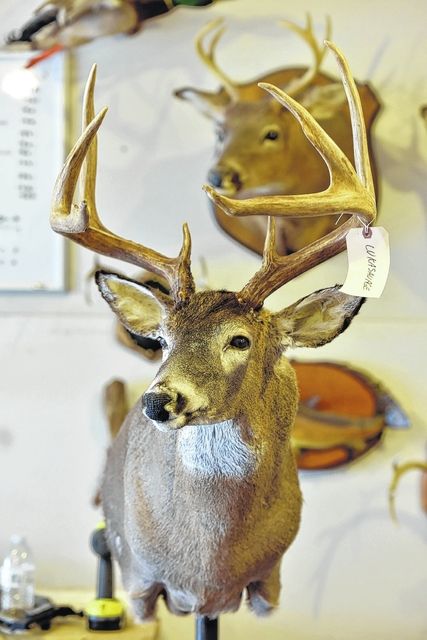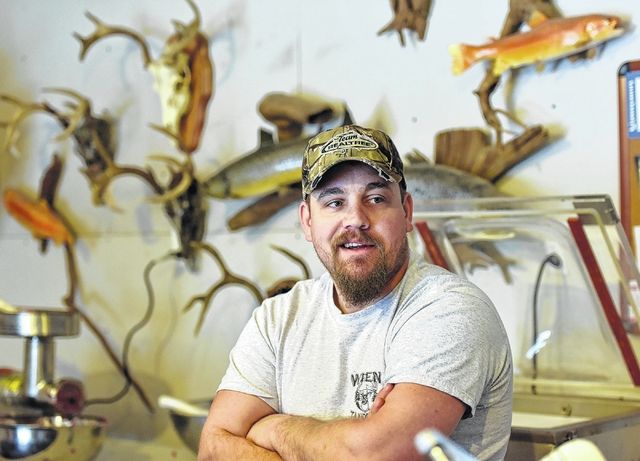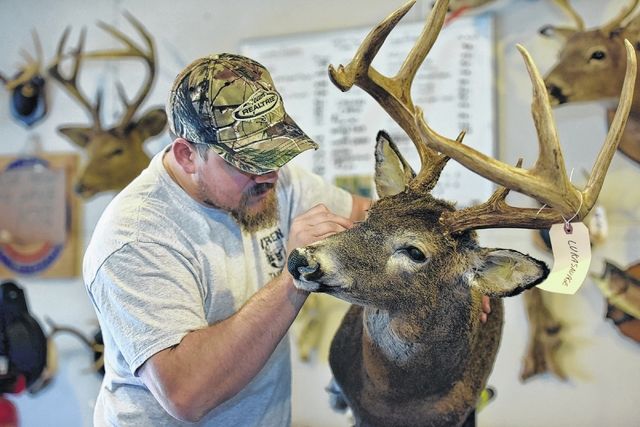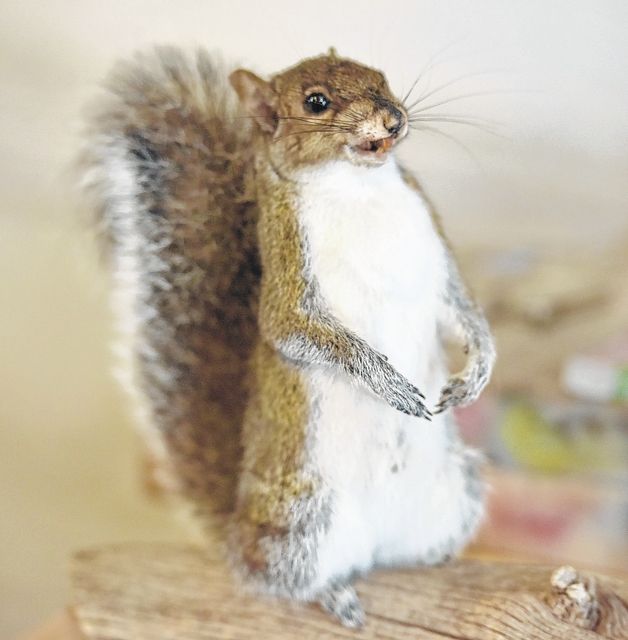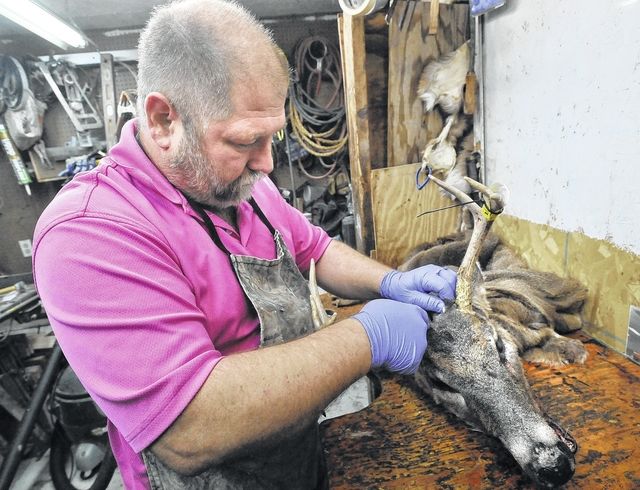Click here to subscribe today or Login.
A taxidermist’s skill to capture the beauty of wildlife takes a creative eye and knowledge of anatomy, master taxidermist Frank Kotula said.
The fine detail of a deer’s nose, the anatomically correct placement of a bear paw or the unique coloring of a fish’s eye have to be taken into consideration when mounting an animal, said Kotula, owner of Frank’s Wildlife Studio in Wilkes-Barre Township
“They are all works of art,” he said.
The skill to make a mounted deer head so realistic it could turn to look at you and blink takes time.
Kotula and Lance Wren, owner of Wren’s Taxidermy in Dallas, agree the process from skinning a deer, tanning the hide and stretching the skin over a foam form can take 16 to 20 hours to complete from start to finish.
Some area taxidermists send the animal hides to tanneries, so factoring in time for shipment increases the wait for the final product, Wren said.
“Bears can take up to a week,” he said.
To ensure the mounted animal matches the original size of the animal, taxidermists rely on measurements taken before the animal is skinned and butchered.
They also use photographs and the hunter’s description about the animal’s behavior to determine the animal’s placement, including the position of ears and the tilt of the head, said Bill Allen, taxidermist and educator at Bill Allen’s Pocono Institute of Taxidermy in White Haven.
“If the deer was alert when they were shot, you want to reflect that with the ears,” Kotula said.
The art form has progressed since its early start.
Early beginnings
Taxidermy started in the 19th century in England. Tanned animal skins were stretched over animal forms made from rags that often distorted the animal’s original form.
Methodologies, tools and techniques have evolved, enabling taxidermists to reproduce an animal’s physical image accurately.
Seventy-one-year-old Allen remembers using compressed paper to form animals for mounting when he first started at age 12.
“It gets better and better every year,” Allen said. “We don’t use any poisons anymore (for tanning hides). We have come a long way.”
Today, taxidermists use foam animal forms and rebuild muscles and facial characteristics with clay, Wren said.
The overall goal is a tribute to the animal’s natural beauty.
“I preserve a memory, not create a hunting trophy,” Kotula said. “I frequently hear clients say that when they look at a deer mount, they remember hunting with their son or dad and where they were and what was happening.”
Local growth
Whether it’s respect and love for wildlife or inspiration from businesses such as Cabela’s and LL Bean that feature showrooms of mounted animals, the number of taxidermists in the commonwealth is holding steady.
During hunting season, Kotula and Wren receive 50 or more specimens each for mounting.
There are 15 taxidermists advertising their services in the Wyoming Valley, Wren said.
Both Kotula and Wren agree more people have entered the trade after the Pennsylvania Game Commission eliminated the taxidermy licensing test in 2006. Industry regulation transitioned to the Department of Agriculture in 2007, Wren said.
As of June 23, 2005, the Pennsylvania Game Commission held 1,233 active taxidermy permits statewide, according to records.
To date, there are 1,251 active taxidermists in Pennsylvania, Brandi Hunter-Davenport, press secretary for the Pennsylvania Department of Agriculture said in an email. “We have seen an increase in the numbers of licensed taxidermists over the years.”
“I was in one of the last groups to took the (written) test,” Wren said.
Allen remembered when the state game commission regulated the industry. Taxidermists were “harassed” by the agency and had their licenses threatened, he said.
Due to the number of complaints from taxidermists against the game commission, the exam was revoked, Allen said. Today, taxidermists register with the Pennsylvania Department of Agriculture and pay an annual fee of $100.
Taxidermists are required to maintain accurate records on all animals received, noting when and where they were killed. Taxidermists are mandated to report endangered species specimens within 72 hours of learning of the kill.
Interest in the trade has increased due to the ease of receiving a license, Allen said.
Each taxidermist has a different style and skill level, Wren and Kotula said.
“It is best to visit and see samples of their work,” Kotula said. “Do not go on price. Cheaper is not always better.”
